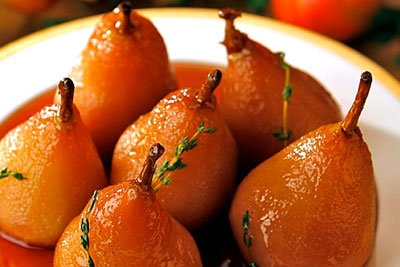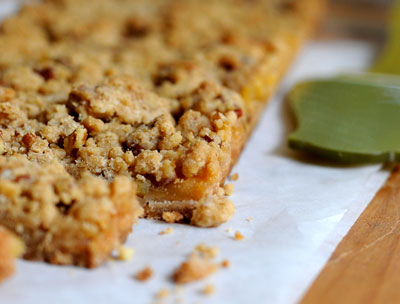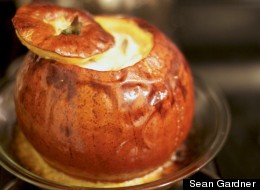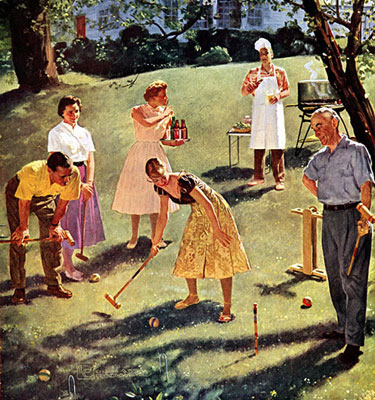 We make a lot of fuss over heirloom peach varieties that date back to the 1960s and tomatoes that go back as far as the 1930s. But did you know that the Bartlett pear, that standard grocery store fruit, actually dates back to the 1770s? The Bartlett, called the Williams pear in England where it was first found, gets its name from Enoch Bartlett, who was the first person to sell the trees in the U.S. in the early 1800s.
We make a lot of fuss over heirloom peach varieties that date back to the 1960s and tomatoes that go back as far as the 1930s. But did you know that the Bartlett pear, that standard grocery store fruit, actually dates back to the 1770s? The Bartlett, called the Williams pear in England where it was first found, gets its name from Enoch Bartlett, who was the first person to sell the trees in the U.S. in the early 1800s.
"Barts" are the predominate pear grown in California, and there are two growing sites with very different fruit. The earliest pears were harvested in August around the Sacramento delta area. They are fine, but the ones being picked about now from the hilly orchards of Lake and Mendocino counties are much better.
How to choose: The best perfectly ripened Bartlett pears will be golden and fragrant and will have a slight softness at the neck. Don't worry if the fruit shows some russeting -- that's only skin-deep and doesn't affect the flavor.

 I had a vegetable drawer filled with fuji apples that had seen better days. They were not fit to eat for my mid morning snack. It’s rare that I clean out my vegetable bin and throw things away. I always try and “re purpose” neglected veggies and fruit and turn them into something delicious.
I had a vegetable drawer filled with fuji apples that had seen better days. They were not fit to eat for my mid morning snack. It’s rare that I clean out my vegetable bin and throw things away. I always try and “re purpose” neglected veggies and fruit and turn them into something delicious. We can't think of many things we like better than
We can't think of many things we like better than  Beets are like paint bombs. Deliciously sweet, red, flavored paint bombs, so intensely colored they stain your fingers, bleed into the sink, tint the cutting board, you name it. When cooked, they aren't so much red as deep magenta. When mixed with sour cream they turn paler shades of magenta to pink. The color, like the flavor is either something you love or you hate.
Beets are like paint bombs. Deliciously sweet, red, flavored paint bombs, so intensely colored they stain your fingers, bleed into the sink, tint the cutting board, you name it. When cooked, they aren't so much red as deep magenta. When mixed with sour cream they turn paler shades of magenta to pink. The color, like the flavor is either something you love or you hate. With autumn beginning to wax, the garden is coming into its own, offering the bounty and plethora of blooms only an early fall garden can provide. Salvias, pentas, lantanas, Artemisia, and pomegranates are looking quite lovely this time of year for they have appreciated and endured the heat and now bestow their blossoms as trophies of survival from the heat of summer.
With autumn beginning to wax, the garden is coming into its own, offering the bounty and plethora of blooms only an early fall garden can provide. Salvias, pentas, lantanas, Artemisia, and pomegranates are looking quite lovely this time of year for they have appreciated and endured the heat and now bestow their blossoms as trophies of survival from the heat of summer.
